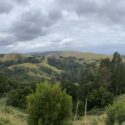Evaluating the economic impacts of investment in National Landcare Programme activities
In 2015, Natural Decisions in collaboration with Advanced Choice Economics, were commissioned by the National Landcare Advisory Committee (NLAC) and Department of the Environment to examine, and quantify the economic benefits of National Landcare Programme activities.
This work represents the first rigorous attempt to assess the economic benefits of investment into Landcare and the National Landcare Programme (NLP) – it proved to be both challenging and fascinating!
A key element of the project involved the development of a systems model that was applied to geographic areas of the grains and mixed livestock zone (Western Australian wheatbelt), cotton (New South Wales and Queensland) and dairy (Gippsland in Victoria) industries. Several practices in each industry were selected that have been important in terms of Landcare investment. The systems model was able to quantify the key on-farm economic benefits including improved yields, increased farm income and reduced costs. Diversified farm income was assessed qualitatively. Key off-farm economic benefits were estimated very simply through assumptions on the impacts on farm profit and input changes, and included increased sales (e.g. rural input suppliers) and services (e.g. increased use of contractors). Overall the study provides an important piece of evidence supporting Australia’s global agricultural competitiveness.
Some of the key findings included:
- A review of literature showed that investment in Landcare has changed the mindset of landholders to be more environmentally conscious and engender a stewardship ethic. It has increased participation in sustainable agricultural and environmental activities.
- The literature review also suggests that Landcare has had significant national influence and impacts through sponsorship (on-ground projects and other sustainability initiatives) largely resulting from the value of the Landcare brand and has influenced activities in a number of countries, however, the economic impacts of Landcare activities cannot be assessed from the literature.
- In excess of $1 billion direct economic market value was estimated in these three case study industries, over 90% of which was estimated to go directly to landholders. Higher overall national economic impact would be estimated as the regions studied were only a sliver of Australian agriculture.
- Additional economic value would be expected if the study were expanded to selected practices covering the three agricultural industries across Australia, other Landcare practices relevant to the industries, additional monetised economic benefits related to the Landcare practices, other industries (e.g. other grazing industries, sugarcane etc.), and non-market valuation of the associated social and environmental benefits. Social and environmental benefits provide additional unmeasured value that was not possible to estimate in this study.
- The work has not considered the costs of implementing Landcare programmes and therefore does not assess overall impact, cost-effectiveness or value for money from the investment.
The systems model we developed to quantify the economic benefits in this study is simple and transparent, and provides a powerful basis for further work. We would be happy to discuss opportunities to further develop and apply the approach.
We are pleased to see the results of this work now publicly available – click here for the full report.
Posted 20 February 2017 in News




















